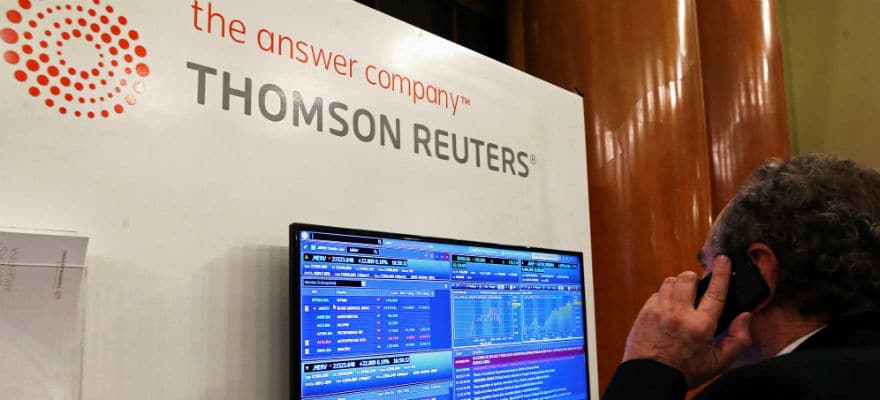Thomson Reuters (NYSE:TRI), a leading FX electronic communications network (ECNs), reported its monthly trading volumes for November 2017. The latest figures were reflective of several market factors, including more stagnated activity and Volatility .
A quick ocular assessment of Thomson Reuters’ FX volumes indicates a growing level of activity in November. However, this increase was relatively minor and came in spite of compressed market activity, namely due to a lack of drivers. Moreover, US tax reform hung as a specter over global markets, given its respective impact on the USD.
As such, the wait-and-see approach towards landmark tax reform in the US managed to lead to lower industry volumes overall. Another factor to watch moving into year-end is the bullishness of stock markets leading to an overall decline in volatility.
In terms of November 2017, Thomson Reuters’s average daily volume (ADV) of its FX products, including spot, forwards, Swaps options and non-deliverable forwards (NDF), came in at $397.0 billion. This figure was up a tepid 1.8 percent month-over-month from $390.0 billion in October 2017. The past few months have represented some of the least volatile periods of the year, as 2017 continues to be characterized by isolated pockets of activity in markets.
In particular, of Thomson Reuters’ total ADV, $94 billion was attributed to FX spot in November, scoring an increase of 3.3 percent on a monthly basis. These volumes have been unable to match an earlier 2017 peak of $103 billion in September.
Factoring out FX spot, other transaction types, including forwards, swaps, options and NDFs, averaged $303 billion per day in November, marginally up from $299 billion in October. The overall static nature of the volumes and lack of any broader moves is on par with its counterparts in the industry.
Earlier this month, other FX venues saw similar moves in their volumes, which were heavily influenced by compressed volatility. Looking ahead to December, a quick and decisive push tax reform in the US looks likely, which could easily drive markets leading into the new year.
As has been the case for much of 2017, ongoing political scandals continue to take center stage with Mueller’s investigation potentially being a wildcard. Markets will continue to stay abreast of these developments as they harbor large repercussions for the USD.

















